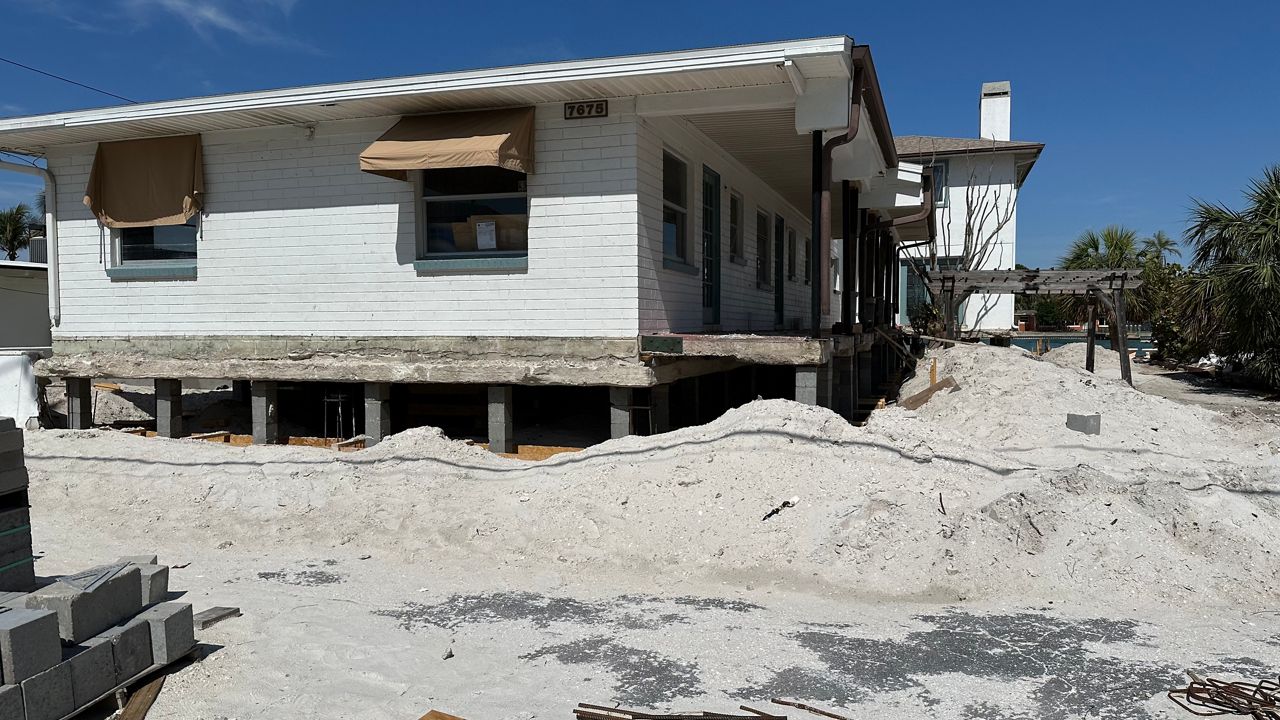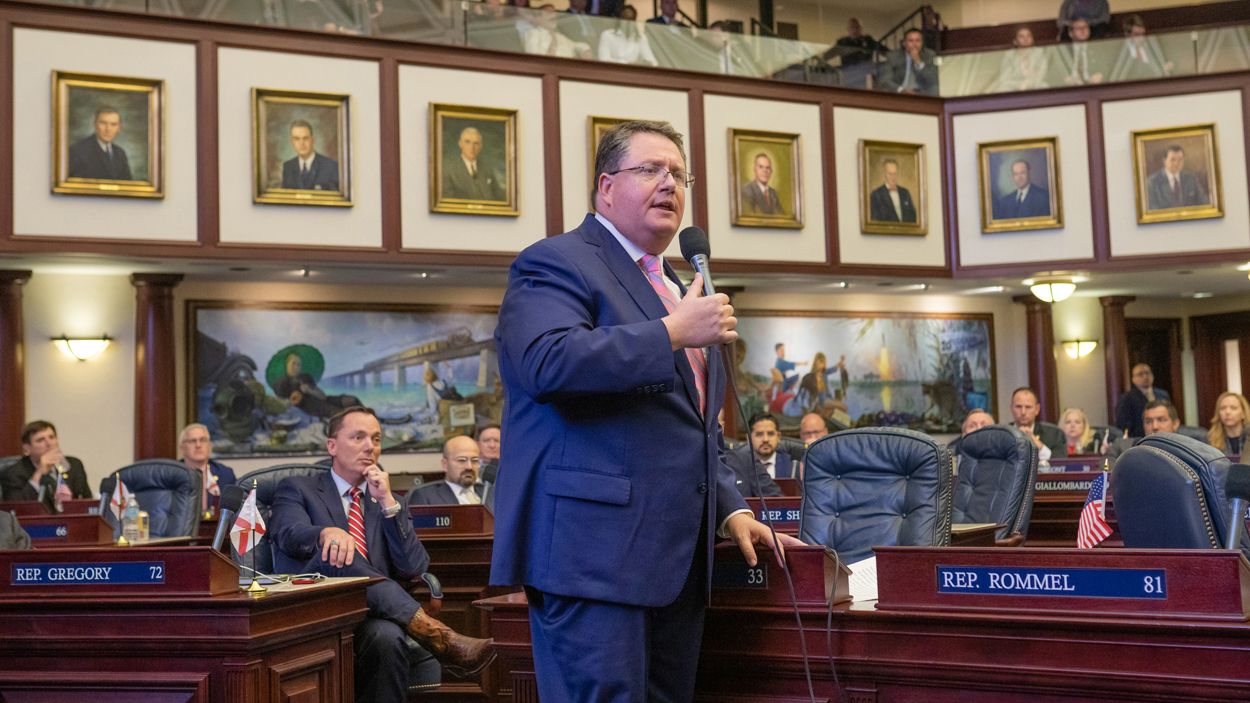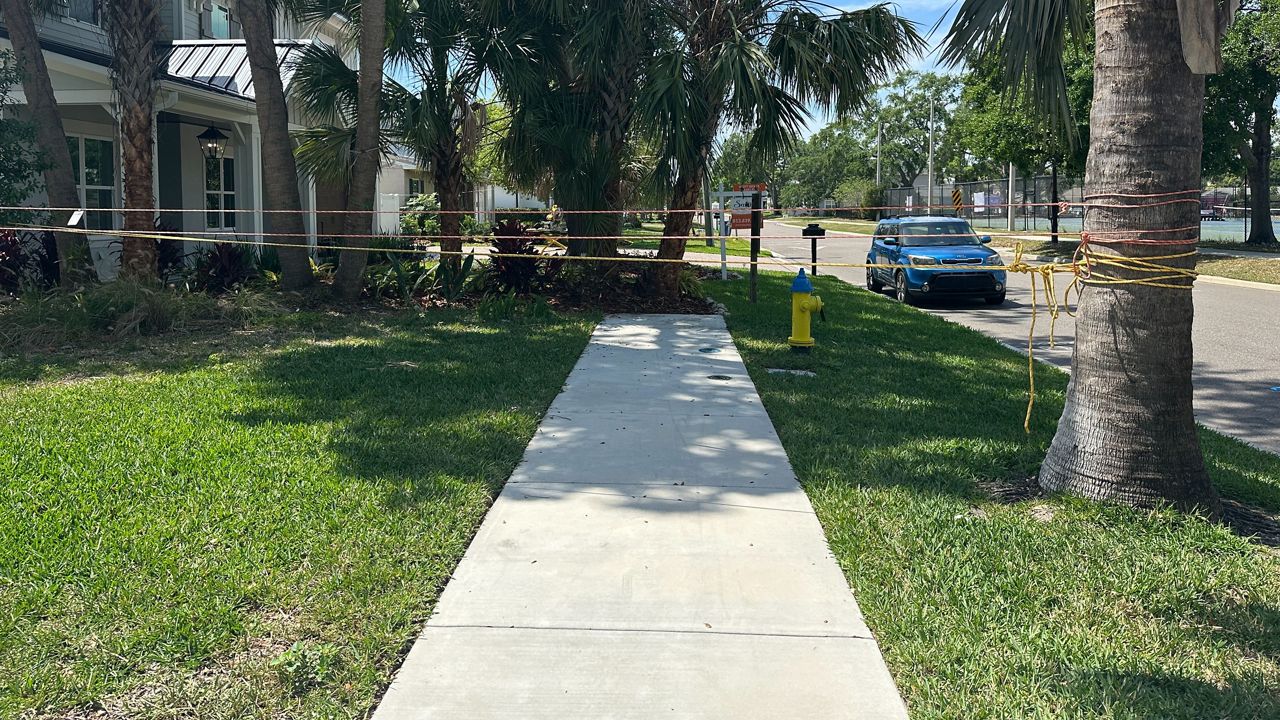ST. PETE BEACH, Fla. — A St. Pete Beach resident whose home flooded twice last year has been urging the city to take more action on stormwater mitigation plans as the Tampa Bay area faces an above average hurricane season.
“I’m very worried because of what happened last year,” said homeowner Mary McReynolds, 74. “We need the city to do its part.”
McReynolds said she had lived in Pass-a-Grille for 11 years and was forced to move in April 2023, when her landlord raised the rent.
She ended up buying a home in the Don CeSar neighborhood, which is the lowest lying on the island, where four generations, including a 96-year-old grandma, all live under the same roof.
“We knew it was a flood zone. However, we also knew that the city had promised to do certain things to alleviate the flooding,” she said. “That has not been done.”
A four generation family who lives in the Don CeSar neighborhood in St. Pete Beach keeps their refrigerator on cinder blocks because they worry about flooding again. Commissioner Betty Rzewnicki wants a resiliency comprehensive plan for the city. @BN9 https://t.co/T9E8MujoXF pic.twitter.com/DVQ9LNR0ay
— Josh Rojas (@JoshRojasBN9) June 18, 2024
In 2020, a city study offered solutions to the flooding problem which have largely not been implemented. About two years ago, the city built new outfall structures with tide flex valves to prevent sunny day flooding but the valves have been failing due to marine growth and debris, according to public works.
At the June 11 city commission meeting, public works director Mike Clarke got funding approved for a few stormwater related measures in the neighborhood. A temporary seawall patch will be done at the 36th Avenue outfall before the peak of hurricane season arrives. The other two measures were for designing the location footprint for the first stormwater pump and designing five new tide check valves.
“It’s not enough. We need (an) immediate response,” said McReynolds. “I can only keep praying and hope that the city follows through with their commitments.”
McReynolds said 4 months after she purchased her home, Hurricane Idalia sent 8 inches of floodwater inside. She woke up at 3 a.m. to her daughter screaming the sewing machine was on fire.
“I ran down the stairs. I stood in the water and I unplugged it. Which is very scary,” said McReynolds. “You just do what you need to do. My daughter’s holding a sewing machine on fire.”
A few months later, a no-name December storm sent another 7 inches of floodwater into McReynold’s home. She said during both floods the putrid water was chocolate brown.
“It is a health hazard every time that water comes into my house. It’s a huge health hazard,” she said. “We’ve got feces. I mean, that’s disgusting and the formation of mold.”
McReynolds lives right across the street from Lazarillo Park. She said trash and dog feces from the park was washed into her home. McReynolds has since shown up to city council meetings in March, May and June to voice her concerns during public comment.
“This is our forever home,” she said at the June 11 meeting. “We need the city to do all measures and maintenance to remedy the flooding because of the hazards of health.”
St. Pete Beach city commissioner Betty Rzewnicki began representing District 3 in January. Rzewnicki said she shares some of McReynolds concerns.
“I absolutely feel the same as far as infrastructure in this particular neighborhood of Don CeSar on infrastructure not being addressed or fixed,” she said. “Having a plan that we’ve been working on slowly and then having changes that haven’t been addressed yet to the community.”
Rzewnicki said she’d like to see better communication coming from the public works department. The city commissioner also wants to hire a chief resiliency officer to oversee and expand the flood mitigation plan.
“Our current public works director obviously has more than just this project. So, with the need of the city I would look to push to have someone in charge of resiliency for the city overall,” she said. “I want to push for the city to have a resiliency comprehensive plan for the whole city and to prioritize in the city the areas of greatest concern first.”
At recent city commission meeting, public works director Mike Clarke has said he’s listening to complaints from residents and plans to take aggressive action. Clarke said the ultimate solution to the flooding problem is raising all the seawalls to 5 feet, while at the same time adding pump stations.









